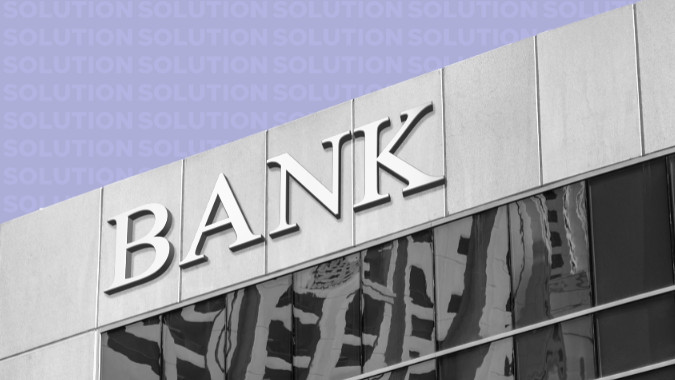
Phantom Income Syndrome
- Published
- Aug 11, 2021
- Share
Phantom income syndrome is the concept that a person or business experiences cash income, net of expenses or taxes, and is not a reliable source of operating income. Millions of Americans and businesses experienced phantom income during the past year through the multiple rounds of stimulus checks and business loans funded by the government. According to data recently released by the Administrative Office of the U.S. Courts, new business bankruptcy filings fell for the year ending June 30, 2021, by almost 18% to 18,511. Meanwhile, non-business bankruptcies fell year-over-year by almost one-third to only 443,798 new filings.1
In March 2020, the COVID-19 pandemic forced many businesses to shut their doors and lose their sources of income. Business owners and operators had to make quick decisions in order to survive the unknown of the pandemic lockdowns. Most companies immediately tried to save money by cutting costs through deferring rent, furloughing employees and eliminating unnecessary expenses. These initial reactions caused the unemployment rate to skyrocket and financial markets to plunge. Throughout the spring of 2020, a flurry of companies quickly filed for bankruptcy protection to restructure overwhelming debt obligations and find additional sources of funding in order to survive.
More than a year later, there is a common perception that the pandemic caused financial strain on almost every person and business. Driven by the news, this perception exists because we can all relate to the negative impact the pandemic caused by forcing a previously successful business to close or knowing a friend or family member who was furloughed. Every day we see the physical scars of the pandemic through recently abandoned storefronts and shuttered restaurants scattered around the country.
Financial Life Support
The 35-year low in bankruptcy filings can be attributed to financial support provided by legislation such as the CARES Act, PPP and Health Care Enhancement Act and Consolidations Appropriations Act. Amid the pandemic lockdowns, the U.S. government stepped in to provide assistance to individuals and small businesses. Over the last year and a half, the government delivered more than $800 billion in stimulus checks to individual Americans and funded nearly $950 billion in loans to businesses for payroll and other vital operating costs.
In addition to the government distributing extra cash to individuals and businesses, moratoriums were put into effect to further reduce the financial strain of the pandemic. The CARES Act initially enacted an eviction moratorium that prevented landlords from evicting residents. Similar moratoriums were put in place to ban banks from foreclosing on homes and defer state and federal student loans. Most of these moratoriums were extended multiple times and are still in place today. Millions of Americans were able to significantly reduce their financial obligations by not having to make rent or mortgage payments and reprioritize their spending on more pressing expenses. As these moratoriums expire, Americans will have to pay back billions of dollars in unpaid rent, mortgages and student loans owed to landlords and banks.
The government relief was critical in keeping many businesses alive despite the slowdown caused by the pandemic lockdowns and restrictions. As COVID-19 continues to prevent a full return to normalcy, the government has funded additional rounds of relief to prevent businesses from drowning in debt in 2020 and through the first half of 2021. The government relief has replaced income, new loans or equity investments for businesses as well as prevented the need for debt restructurings. As new COVID variants spread, the government may consider additional relief, which could further limit the number of bankruptcy filings in 2021.
Mega Bankruptcies
The government relieved some of the financial burdens that individuals and small businesses faced during the pandemic. However, the same support was not available to large corporations with more than 500 employees. From January to September 2020, 138 companies with more than $100 million in assets and 52 companies with more than $1 billion in assets filed for bankruptcy2. A total of 46 of these 52 companies filed for bankruptcy after the March 2020 lockdowns. Even though most of these companies were facing financial difficulties pre-pandemic, they all cited COVID-19 and the lockdowns as the main reasons for filing Chapter 11.
The spike in mega bankruptcies is driving the perception that bankruptcy filings were more common during the pandemic than before. There were more than double the amount of large bankruptcy filings in Q2 and Q3 2020 than the quarterly average over the past 15 years. Some of the mega companies that filed for bankruptcy during this time include Hertz, LATAM Airlines, JCPenny and Neiman Marcus. All of these high-profile companies are household brands with locations nationwide. The focus on the mega bankruptcies is driving the misconception that companies are filing bankruptcy at a higher rate during the pandemic than before.
Phantom Income Syndrome
Even though new bankruptcy filings are at 35-year lows does not mean companies should ignore the threat of bankruptcy. The government-funded loans provided by the CARES Act and other legislation were and continue to be vital for keeping businesses alive. For many small businesses, the government loans have replaced lost revenues caused by the pandemic. In addition, the multiple rounds of funding by the government can feel like they can be, and in some cases actually be, reported as a source of income.
As the country begins to emerge from pandemic restrictions, businesses need to be vigilant about cash flow. Developing a 13-week cash flow can help companies forecast expected cash inflows and outflows. A 13-week cash flow is a financial statement that helps companies monitor liquidity and analyze the short-term impact of business decisions. This financial statement can help distressed companies get more comfortable with cash and, hopefully, prevent further financial strain and bankruptcy. The spike in large-company bankruptcy filings that were not eligible for pandemic relief should be a warning sign for all businesses. Once the government relief stops, businesses will need to generate positive cash flow from operations in order to survive in the post-pandemic economy.
1Bankruptcy Filings Plunged to Lowest Number Since 1985, Administrative Office of the U.S. Courts.
2Trends in Large Corporate Bankruptcy and Financial Distress, Cornerstone Research.
Contact EisnerAmper
If you have any questions, we'd like to hear from you.
Receive the latest business insights, analysis, and perspectives from EisnerAmper professionals.









